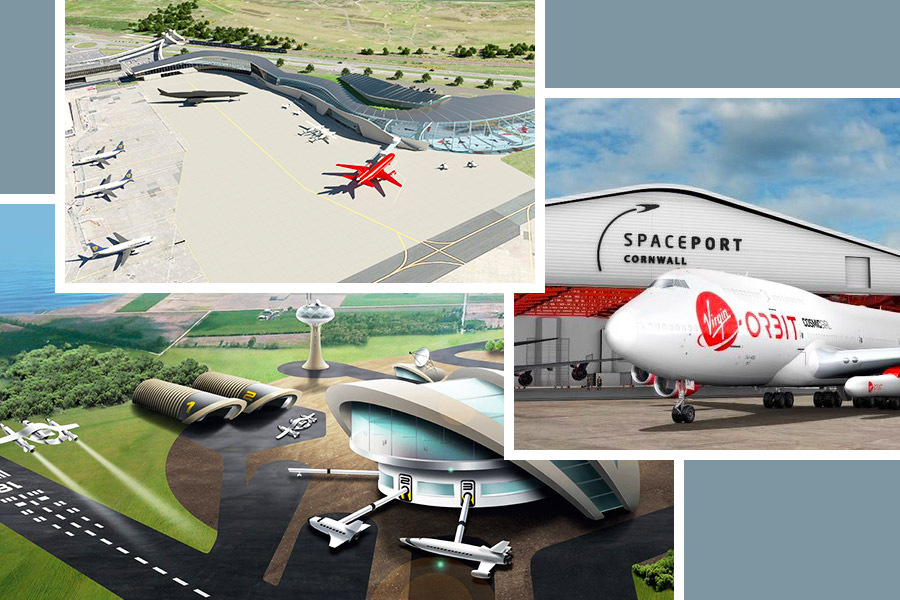What Is the Difference Between a Horizontal and Vertical Launch?
3rd Feb 2020
The United Kingdom and the space industry have very much been in the spotlight recently as the UK ramps up its efforts to become a key player in space exploration, earth observation & communications, amongst other key areas of space. The government is doing all that it can to help fund and support this mission. The country is frequently innovating in the space sector and is actively working towards new launch capabilities to send satellites into orbit from its shores.
Spaceport UK is aiming to be a market leader in space technology and science. Satellite constellations for telecommunications and earth observation are at the top of their priorities. This is certainly no easy feat as the United Kingdom is prepared to spend almost 500 billion euros to achieve this mission. The country intends to take advantage of the growing market with small horizontal and vertical launchers.
As we see more preparation within the next few years, many questions may arise. However, one that people frequently ask is the difference between horizontal and vertical launches.
Horizontal and vertical rocket launch: How they differ?
Horizontal launch
A horizontal launch is typically operated out of an airport. It provides a platform where an aircraft may fly over adverse weather and maneuver safely in the air to a launch location. During this launch, the plane rolls off the runway and gradually lifts off the ground. This plane navigates to a location from where it releases a rocket from underneath one of its wings. The rocket is dropped firstly, and then when safely away from the aircraft it ignites and lifts into space. Although being a very efficient method, it does have a weight requirement, which makes it only great for small satellites. Such launches do, however, save fuel costs because the plane generates most of the energy needed. Vehicles that launch horizontally are typically more sturdy and able to endure bending modes, high aerodynamic pressures, and turbulence. This launch method also means the rockets can be taken to a variety of different locations for launch, offering the ability to get satellites into numerous orbits
Vertical launch
A vertical launch is the most common type of launch that most will be familiar with. It shoots the rocket up vertically, which will typically have between one and three stages. So, with a three-stage rocket, the first stage will be jettisoned and fall back to earth, where a second stage will then take over and carry the rocket on to the next part of its journey. This stage will eventually be discarded, and a third stage will conduct more accurate manoeuvres to get the satellite into a very specific location.
The UK spaceport is the platform from where a vehicle launches into space safely. To do so, the goal is for the rocket to ultimately pass from the gravitational fields with as little fuel as possible. A vertical rocket launch site is especially necessary for the vehicle to maintain low speeds while passing through the thicker parts of the atmosphere. For an object to successfully launch into space, it must accelerate at approximately 5 miles per second.
One of the benefits of air launching is that it is less expensive. It doesn’t typically require costly launch grounds and can typically use existing airfields. Additionally, if an emergency abort is to take place, the runway launch is safer for occupants to egress. All that is needed is a clear runway.
However, air launches can be expensive, and often they will require travelling over populated areas, whereas vertical launches most often do not.
Why is the United Kingdom so involved in space technology now?
The UK recently passed an Act of Parliament to accommodate a new space industry, allowing private companies to get involved in all aspects of the space sector, including launch. Other countries have recently done the same, where historically space activity has been heavily funded and operated by governments, it has opened up to private enterprise, allowing for faster innovation and an accelerated programme of activity. In the UK the rocket launch sites are mainly based in Scotland where there is a clear line of sight into Sun Synchronous Orbit and Polar Orbit, which means that launch will be easier, more effective and ultimately less costly than maybe elsewhere.
Summary
Space technology is what provides us with our GPS, our internet, communications, TV news and entertainment, as well as monitoring and protecting the environment through earth observation. The fact that the UK is entering into the launch aspect of space means that we can get more satellites that are utilising the latest technology and are ultimately smaller than ever before, into orbit. Both horizontal and vertical launch facilities combined will mean that we can achieve a number of different orbits, placing the UK in quite a unique position, which will then lead to greater demand for its launch services.
There is still more work to be done in space technology and integration. The United Kingdom is currently aiming to be an industry leader and will have a 10% share in the global market by the year 2030.






Thank you for your comment! It will be visible on the site after moderation.